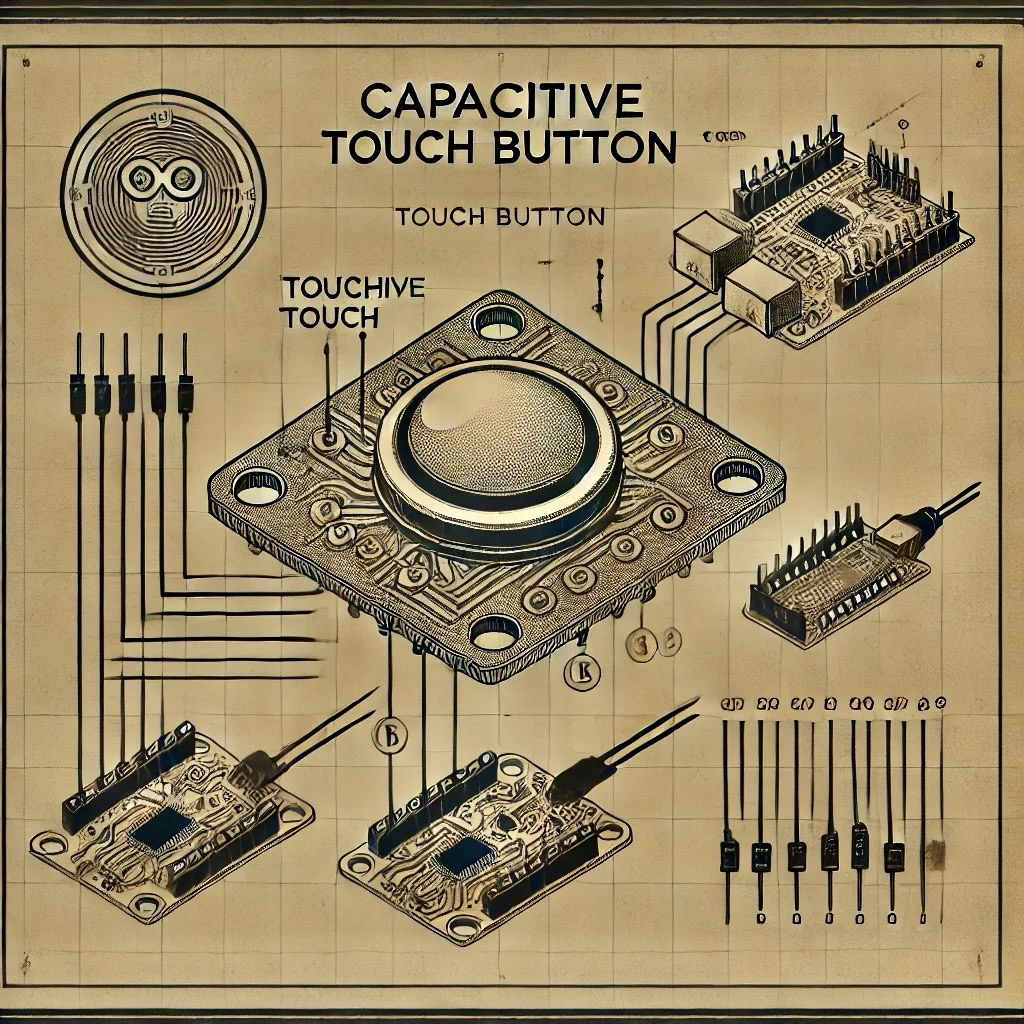Overview
This experiment demonstrates a capacitive touch sensor that detects the presence of a human finger based on changes in capacitance. These sensors are widely used in modern touch-sensitive devices, including smartphones, tablets, and interactive displays.
How Capacitive Touch Sensors Work
Capacitive touch sensors operate by measuring changes in capacitance caused by the presence of a conductive object (such as a human finger). When a finger approaches or touches the sensor, it disrupts the electrostatic field, altering the capacitance, which the sensor detects and processes as an input signal.
Applications
- Touch-sensitive buttons for electronic appliances
- Interactive kiosks
- Wearable devices and smartwatches
- Automotive controls
Components Required
- Capacitive touch sensor IC (e.g., TTP223 or similar)
- Microcontroller or logic circuit (e.g., Arduino or Raspberry Pi)
- Resistors (for calibration or pull-up/down)
- Capacitors (if required for stability)
- Power supply (3.3V or 5V, depending on the IC)
- Breadboard and jumper wires
Procedure
1. Connect the capacitive touch sensor IC to your microcontroller or logic circuit according to the datasheet. Typically, the sensor has three pins: VCC, GND, and OUT.
2. Use a resistor (if needed) to fine-tune the sensitivity of the sensor. Some ICs allow external components for calibration.
3. Power the circuit with the appropriate voltage (e.g., 3.3V or 5V).
4. Write or upload the control program to the microcontroller to read the sensor’s output signal. For example, in Arduino, you can use a digital input pin to monitor the sensor's state.
5. Touch the sensor pad and observe the output signal (e.g., LED lighting up or a serial monitor showing state changes).
Expected Result
When the sensor is touched, it will detect the change in capacitance and send a high or low signal (depending on configuration) to the microcontroller. This signal can trigger an action, such as lighting an LED, activating a relay, or displaying a message.
Code Example (Arduino)
const int touchPin = 2; // Connect OUT pin of sensor to digital pin 2
const int ledPin = 13; // Built-in LED
void setup() {
pinMode(touchPin, INPUT);
pinMode(ledPin, OUTPUT);
Serial.begin(9600);
}
void loop() {
int touchState = digitalRead(touchPin);
if (touchState == HIGH) {
digitalWrite(ledPin, HIGH);
Serial.println("Touch detected!");
} else {
digitalWrite(ledPin, LOW);
}
delay(100);
}
Further Exploration
- Adjust the sensitivity of the sensor to detect touches through different materials (e.g., glass or plastic).
- Integrate the sensor with other components, such as a motor or buzzer, for interactive projects.
- Create a capacitive touch keyboard by using multiple sensors in a grid arrangement.
- Experiment with different touch patterns (e.g., double-tap or swipe gestures) using advanced microcontroller programming.
